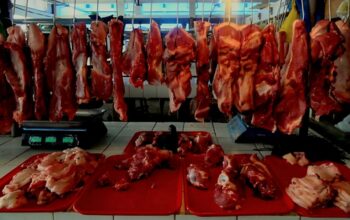
CORTES, Bohol (PIA)—There is still enough water in Bohol’s major dams to serve farmers’ irrigation needs for this cropping season, but there might not be enough to serve everyone in the next cropping season in October.
This came from the authorities of the National Irrigation Administration in Region 7 (NIA-7), who came to the weekly Kapihan sa PIA to discuss the government’s plans and mitigation measures especially in the management of irrigation water in the advent of a long dry spell.
Philippine Atmospheric Geophysical, Astronomical Services Administration (PAG-ASA),the country’s weather bureau has alerted everyone on the transition from El Niño Southern Oscillation (ENSO)-neutral to El Niño which can happen in the next couple of months, with higher chance of El Niño persisting up to the first quarter of 2024.
Pag-asa sounded the alert last 24 May 2023 and added that El Niño increases the likelihood of below-normal rainfall conditions, which could bring negative impacts (such as dry spells and droughts) in some areas of the country.
With the announcement, Bohol Governor immediately issued Executive Oder No 23, which created the El Nino Task Force 2023, whose task would be to prevent and mitigate the possible damages this dry spell may give to agriculture, fisheries and the environment.
With Bohol producing a vast majority of the rice demand for Central Visayas, getting enough water to irrigate the farms for every cropping season could assure the Visayas of sustainable food supply in rice.
But with the drought possibly getting felt in July, Bohol, which relies on its irrigation from rains getting to the dams as reservoirs could be facing a bleak cropping season after this month.
“Proper water management,” hints NFA-7 senior hydrologist Aproniano Añora, who added that they have started releasing irrigation water.
NIA administers four major dams in Bohol: the 5 million cubic meter capacity of the Malinao Dam in Pilar, the 25.10 million cubic meter capacity of the Bayongan Dam in San Miguel, the 3.4 million cubic meter capacity of the Capayas Dam in Ubay and the 5.2 million cubic meter capacity of the Zamora Dam in Talibon.
This early, when the dams are already at their spilling level, Añora said they have started releasing water to the first batch of farmers, so that when the rains would come, the dams could still get some in store.
He also said that Malinao Dam has also released some of its water to Bayongan Dam, which relies its bulk of water supply from Bayongan.
Bayongan, which has deeper catchment area stores five times than Malinao, but Malinao reservoir is supplied by the Wahig-Pamacsalan River.
By water management, NIA means they are releasing the water in batches, to make sure that only those cluster of farms that have been readied for the release gets the water.
With the additional space, the dams could again continue receiving rain water with the onset of the southern monsoon (habagat) getting pulled in by the super typhoon which passes near the Philippines at the moment.
But, even with the water management, NIA senior engineer Maria Donesa Autida said the water in store at the dams would not be sufficient to serve everyone in the next cropping in October.
NIA however shared that the Provincial Government and the Department of Agriculture have earmarked funds for possible intervention.
Engr. Autida said should the dry spell happen as forecast, there are provisions for cloud seeding operations, while NIA on the other hand continue to fix and solve seepage especially in earthen canals by getting them into concrete canals.
In coordination with LGUs and with irrigation associations, farmers are not just managing their community irrigation systems but are also cleaning up canals, to hasten the water flow.
And in the possibility that farmers whose paddies could not be served by irrigation due to possible lack of water, NIA recommends planting vegetables and other crops that need minimal water, so that they could still harvest something and tide up the El Niño scrimp. (rahc/PIA-7/Bohol)



